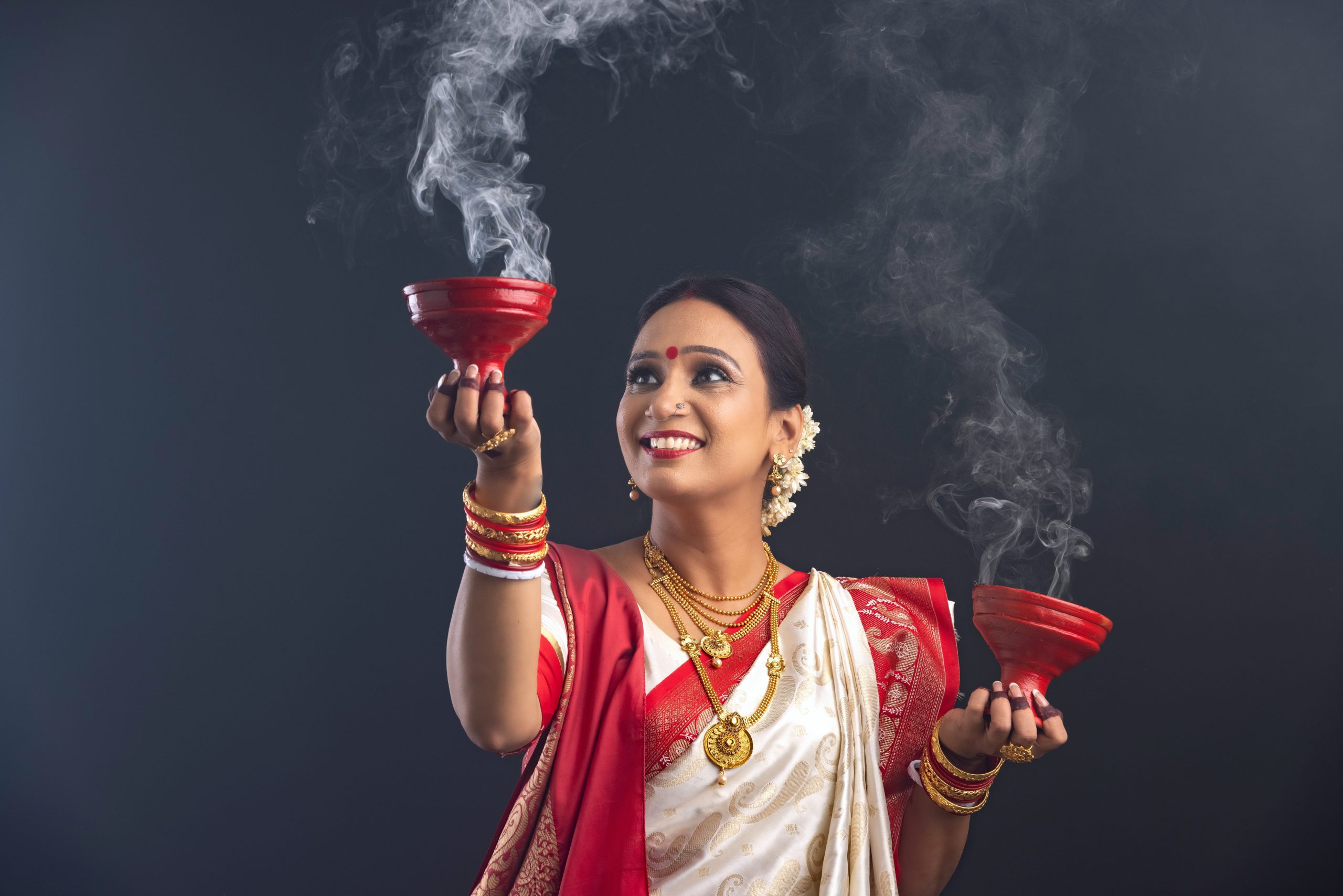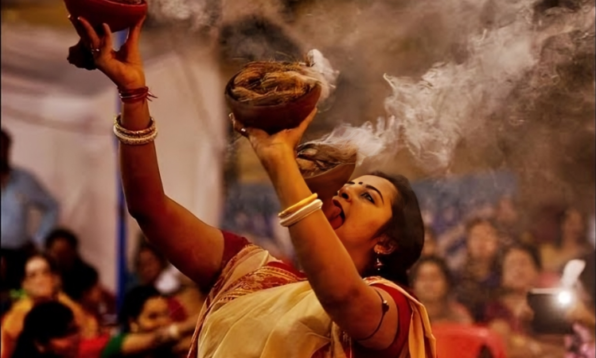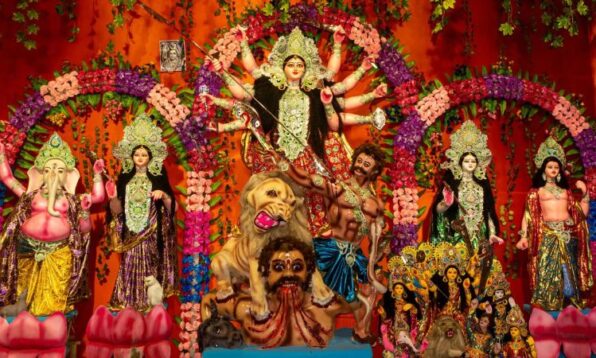Have you ever watched Bengalis dancing with smoke-filled pots at Durga Puja pandals and been amazed by their performance? That’s called Dhunuchi Naach in the Bengali tradition. The rhythmic beats of the dhaak (musical instrument), the swirling incense smoke, and the devotees performing this dance enhance the vibe of Durga Puja. But it’s not merely a dance; it’s an age-old tradition that’s rooted in history. Do you know the significance of the Dhunuchi Naach? Here’s how it first came into existence.
Related: Drape It Like A Bengali: 7 Homegrown Saree Brands To Try This Durga Puja 2025
Significance of Dhunuchi Naach

Bengalis in West Bengal and worldwide consider Dhunuchi Naach as a devotional art form in their tradition. Dhunuchi refers to a clay incense burner, and Naach means dance. The story dates back to the 16th-17th century, when Bengalis observed it as a rural ritual to honour Goddess Durga. But do you know why they started Dhunuchi Naach as a ritual?
According to Indian mythology, a powerful demon named Mahishasura, who was half-human and half-buffalo, conquered the heavens, spreading terror throughout the universe. This shape-shifting demon did years of penance to please Lord Brahma. The god, impressed by his devotion, granted Mahishasura a boon that he can neither be killed by a god nor a man.
How Goddess Durga killed Mahishasura

When Mahishasura used his powers to destroy the universe, the gods had to intervene to stop him. They combined the energies of Lord Shiva, Lord Brahma, and Lord Vishnu to create the female warrior, Maa Durga. When Mahishasura was about to transform into his buffalo form, Goddess Durga, through her divine feminine power, pierced her trident (trishula) into the demon’s body. The people, earlier terrified by Mahishasura, were now amazed by Goddess Durga’s power. So, they celebrated her victory and divine energy by performing Dhunuchi Naach. But do you know how Bengali devotees perform this ritual?
How Bengalis perform Dhunuchi Naach
/30-stades/media/media_files/hz4jqdObeOdaLkN7zp0E.jpg)
The devotees fill their dhunuchis (earthenware) with burning coconut husk and incense. This smoke gives out an aroma that is symbolic of devotion, purification, and triumph. Every Durga Puja, Bengalis perform Dhunuchi Naach by holding the smoke-filled clay pots in both hands and one between their teeth. People who are skilled at this dance form try to balance a dhunuchi on their forehead too, all while grooving to the musical beats of dhaak. It’s always less about the technique and more about surrendering to the rhythm, the smoke, and the spirit of pujo.
This year, the followers of Maa Durga are observing Durga Puja from September 28 (Shashthi) to October 2, 2025 (Vijayadashami). Durga Puja pandals in India will also be holding Dhunuchi Naach competitions to celebrate the four-day festival. So, whether you’re a skilled dancer or an onlooker who would love to see how people perform Dhunuchi Nritya, visit the pandals near you.
Featured Image Source
Related: 7 Must-Visit Places In Delhi NCR To Bookmark For Durga Puja This Year

 Web Stories
Web Stories













